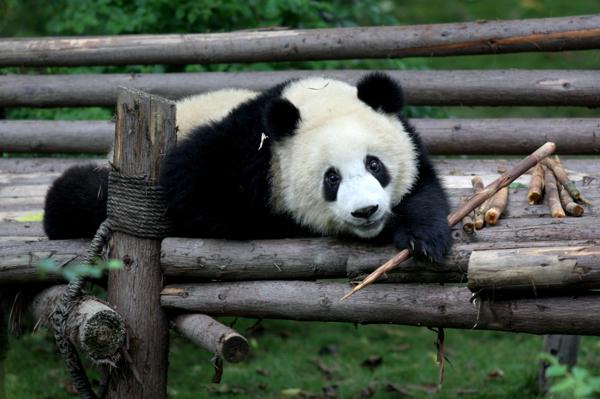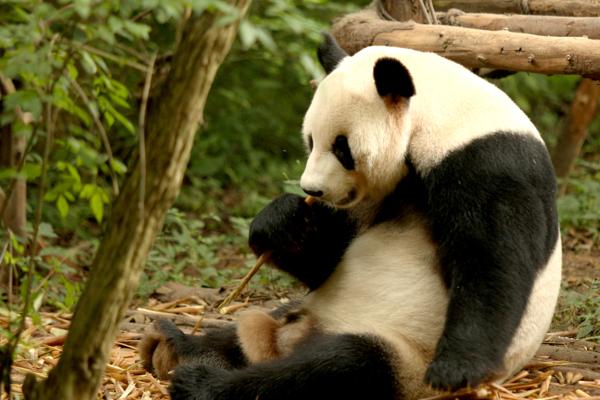
A panda plays with bamboo at the Chengdu Research Base of Giant Panda Breeding.Photo by Wang Zhuangfei/China Daily
Chengdu - Animal experts are pressing ahead with a groundbreaking program to release captive-born giant pandas into the wild.
The initiative could help to secure the future of the endangered species, a symbol of both China and the global conservation movement.
“This program is aimed at increasing the giant panda population and improving the survival rate of this precious species,” said Huang Xiangming, a researcher at the Chengdu Research Base of Giant Panda Breeding.

Two pandas play together at the Chengdu Research Base of Giant Panda Breeding. Photo by Wang Zhuangfei/China Daily
The panda lives in forests in the southwest of the country, but the number in the wild is unknown. Huang said the last official nationwide census in the 1980s put the figure at 1,900. The results of a new census have yet to be released.
The animals at the center in Sichuan province are the product of several generations of captive breeding by artificial insemination, so they have no natural survival skills.
In the wild, panda cubs are taught the skills they need to survive by their mother.
Staff will have to help them acquire these abilities through a special training program before any can be freed.
The Wolong panda center, also in Sichuan province, has released two animals. However, they were born to a mother who was saved from the wild and could pass on survival skills.
If successful, the Chengdu program will be the first to release pandas bred by artificial insemination over several generations.
“We are just at the start of this research program, but I believe the base can achieve a lot from it and we will finally be able to send inseminated pandas into the wild,” said Huang.
“The Wolong pandas were released in a totally natural environment. They had very strong natural characteristics so it was easier for the center to send them into the wild.
“Maybe our pandas’ grandmother’s grandmother was artificially inseminated, so they have no ability at all to live in the natural world. Maybe they will meet some natural enemies,” Huang added.

A panda eats bamboo at the Chengdu Research Base of Giant Panda Breeding.Photo by Wang Zhuangfei/China Daily
The Chengdu center has set up a base, at nearby Dujiangyan, where staff members are training four adult pandas to find food, water and shelter and avoid predators.
A further four young animals have been selected to join them and are being prepared for the move from the main Chengdu site.
Yang Kuixing, another researcher at the Chengdu base, said: “Only very healthy and active animals are chosen for this program.
“The first four are receiving training from a special team to help them live in the wild.
“After that, the experts will choose the fittest pandas and send them to a semi-wild environment,” Yang said.
“The pandas may live there for several years, and if they survive in that environment they will finally be sent to a completely wild environment.”
No time has been set for when the first release will take place.
“It depends on a number of factors, such as the physical condition of the pandas and their development,” Huang said.
